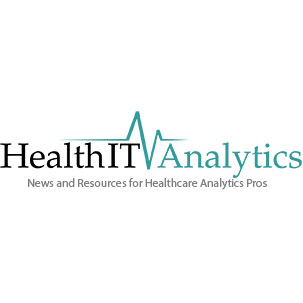
Predictive Analytics, Healthcare IoT Lead EHR Market Growth
Predictive analytics and the Internet of Things are at the top of the wish list for potential purchasers of new electronic health record offerings.
Electronic health record vendors looking to attract customers to the next generation of upgrades and installs will likely be relying on predictive analytics and the healthcare Internet of Things, according to a series of new market reports.
The compound annual growth rate (CAGR) in the EHR marketplace will continue to rise at approximately 5.5 percent, says Research and Markets, as vendors begin to roll out a new set of integrated big data analytics offerings.
Predictive analytics are in particularly high demand among the provider community, the report added, as healthcare organizations square up to the challenge of value-based reimbursements, population health management, and rising regulatory demands.
Technavio also predicts a 5 percent CAGR for the EHR market, projecting an industry value of more than $28 billion by the end of the decade. The United States, Europe, and leading Asian economic powerhouse nations are likely to be responsible for majority of this growth.
“There is greater adoption of EHR in developed economies as compared to developing economies owing to IT budget constraints in developing countries,” said Amit Sharma, a lead analyst from Technavio.
“The adoption of EHR systems in the European healthcare IT market is increasing at an exponential rate so as to increase the quality of patient care.”
The North American healthcare IT market, which includes EHR products, health information exchange technologies, care coordination, and administrative management tools, is likely to reach $72.2 billion by 2020, added Absolute Reports in its own assessment.
Analytics, especially predictive analytics, are top of mind for providers seeking EHR upgrades or plug-and-play modules. A previous report by Research and Markets pinned the predictive analytics sector at a whopping $95 billion by 2025, representing a 24.1 percent compound annual growth rate.
Predictive analytics have already helped providers tackle difficult patient identification and risk stratification activities related to a number of chronic and acute conditions, including hepatitis C, sepsis, suicide, self-harm, and mental health risks, medication adherence, diabetes, and opioid abuse.
In conjunction with clinical and administrative analytics, providers are starting to explore the patient engagement and population health management opportunities inherent in the Internet of Things.
The rapid proliferation of IoT tools and devices, including wearable fitness trackers, mHealth apps, Bluetooth scales, pill boxes, glucose monitors, and blood pressure cuffs, are allowing patients an unprecedented degree of flexibility when it comes to managing their own health.
However, the EHR industry has struggled to keep pace with consumer adoption of these new technologies, and providers currently lack the widespread capability to accept, analyze, visualize, and utilize Internet of Things data for clinical decision-making.
While Grand View Research recently predicted that the healthcare IoT market would be worth $410 billion by 2022, and RnR Market Research anticipates a 36.5 percent CAGR in the same segment over the next four years, much of the development of the IoT in healthcare appears to be on the infrastructure side.
Leading companies in the RnR report include infrastructure experts like Cisco Systems, Qualcomm, SAP, Microsoft, and IBM. The brief does not list any dedicated EHR vendors as leaders in the IoT space, yet many of these pioneering companies have already established IoT, analytics, and other partnerships, projects, and pilots with health information management and EHR developers.
Qualcomm, for example, is working with Cerner Corporation to improve medical device connectivity across the care continuum, while Microsoft’s analytics capabilities are bringing clinical decision support, cognitive computing, and mHealth options to patients and providers alike.
Epic Systems and IBM Watson Health have been working together since 2015 to enrich the decision-making tools in the widely used EHR ecosystem, while SAP has a long history of partnering with healthcare providers and other organizations to bring big data analytics, predictive analytics, and clinical decision support options to the point of care.
These crossover collaborations will continue to drive growth across multiple health IT sectors as the EHR and big data markets continue their evolution.
Globally, the health IT market may continue to grow at a 13.4 percent CAGR to be worth a staggering $228 billion by 2020, says MarketsandMarkets, opening up untold opportunities for established developers – and new start-up entrants – to bring a variety of important technologies to the evolving healthcare space.
